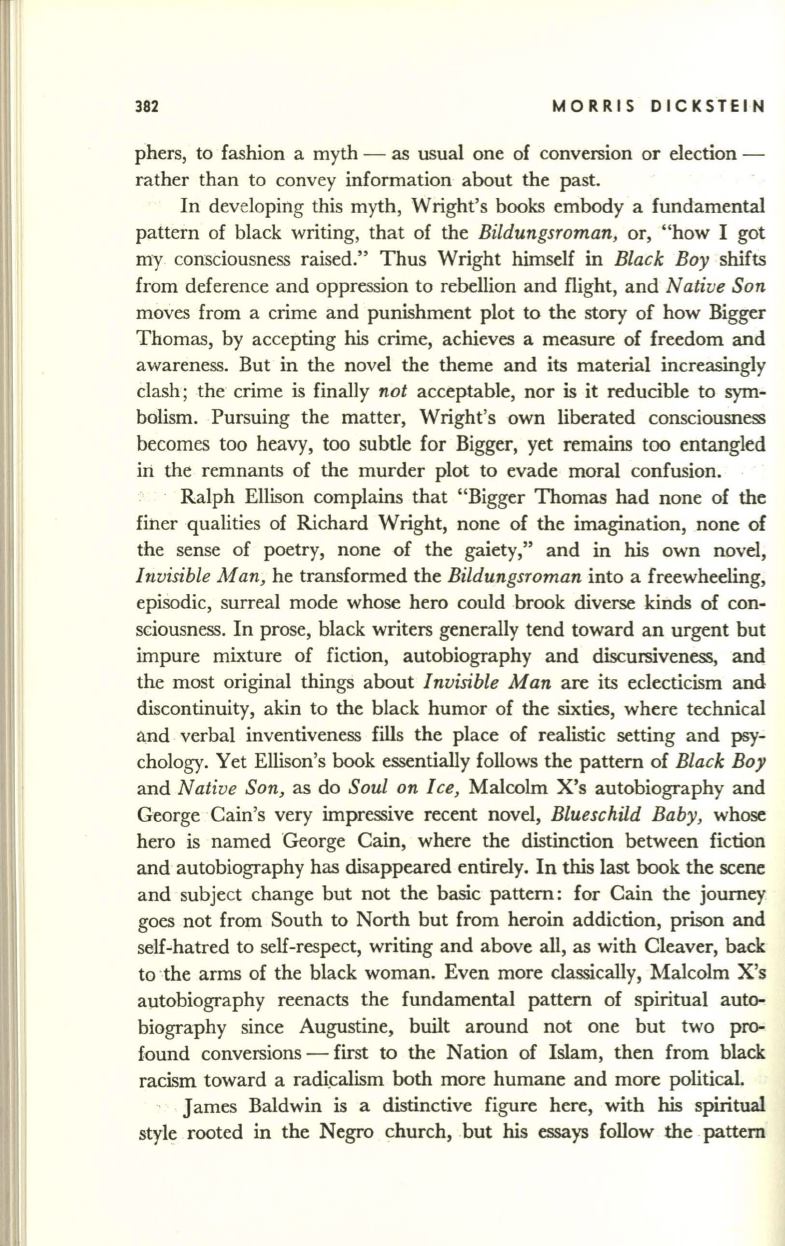
382
MORRIS DICKSTEIN
phers, to fashion a myth - as usual one of conversion or election–
rather than to convey information about the past.
In developing this myth, Wright's books embody a fundamental
pattern of black writing, that of the
Bildungsroman,
or, "how I got
my consciousness raised." Thus Wright himself in
Black Boy
shifts
from deference and oppression to rebellion and flight, and
Native Son
moves from a crime and punishment plot to the story of how Bigger
Thomas, by accepting his crime, achieves a measure of freedom and
awareness. But in the novel the theme and its material increasingly
clash; the' crime is finally
not
acceptable, nor is it reducible to sym–
bolism. Pursuing the matter, Wright's own liberated consciousness
becomes too heavy, too subtle for Bigger, yet remains too entangled
in the remnants of the murder plot to evade moral confusion.
Ralph Ellison complains that "Bigger Thomas had none of the
finer qualities of Richard Wright, none of the imagination, none of
the sense of poetry, none of the gaiety," and in
his
own novel,
Invisible Man,
he transformed the
Bildungsroman
into a freewheeling,
episodic, surreal mode whose hero could brook diverse kinds of con–
sciousness. In prose, black writers generally tend toward an urgent but
impure mixture of fiction, autobiography and discursiveness, anq
the most original things about
Invisible Man
are its eclecticism and
discontinuity, akin to the black humor of the sixties, where technical
and ,verbal inventiveness fills the place of realistic setting and psy.;
chology. Yet Ellison's book essentially follows the pattern of
Black Boy
and
Native Son,
as do
Soul on Ice,
Malcolm X's autobiography and
George Cain's very impressive recent novel,
Blueschild Baby,
whose
hero is named George Cain, where the distinction between fiction
and autobiography has disappeared entirely.
In
this last book the scene
and 'subject change but not the basic pattern: for Cain the journey
goes not from South to North but from heroin addiction, prison and
seIf~hatred
to self-respect, writing and above all, as with Cleaver, back
to -the arms of the black woman. Even more classically, Malcolm X's
autobiography reenacts the fundamental pattern of spiritual auto–
biogra:phy since Augustine, built around not one but two pro–
found conversions - first to the Nation of Islam, then from black
racism toward a radi.calism both more humane and more political.
J
ames Baldwin is a distinctive figure here, with
his
spiritual
styl(! rooted in the Negro church,but his essays follow the ,pattern


